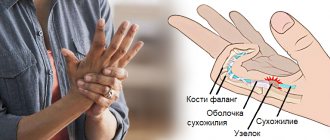Becoming a mother and having a healthy child is a great happiness! However, complications during pregnancy can occur in any woman, even a completely healthy woman. That’s why it’s so important to see a good specialist from the earliest stages of pregnancy (see pregnancy management).
The following complications of pregnancy are distinguished:
- toxicosis;
- gestosis;
- ectopic pregnancy;
- premature birth;
- miscarriage (spontaneous abortion);
- frozen (non-developing pregnancy).
1
Diagnosis of complications during pregnancy
2 Diagnosis of complications during pregnancy
3 Diagnosis of complications during pregnancy
Toxicoses
Toxicosis occurs in the first half of the term and is manifested by dyspeptic disorders and disorders of all types of metabolism.
In almost 90% of cases, early toxicosis in the first half of pregnancy is manifested by nausea and vomiting. If pregnancy is proceeding normally, then nausea or vomiting may occur no more than 2-3 times during the morning, more often on an empty stomach. These disorders do not require treatment and should go away on their own after 12-13 weeks.
Toxicosis is a condition in which nausea and vomiting occur at any time of the day, regardless of meals, and are accompanied by decreased appetite, exhaustion, weakness and weight loss.
Lifestyle of a pregnant woman, regime, nutrition and hygiene
The developing fetus receives all the necessary nutrients from the mother. The well-being of the fetus depends entirely on the health of the mother, her working conditions, rest, diet, and the state of the nervous and endocrine systems.
Pregnant women are exempt from night shifts, heavy physical work, work associated with body vibration or adverse effects of chemicals on the body. substances. During pregnancy, sudden movements, heavy lifting and significant fatigue should be avoided. A pregnant woman needs to sleep at least 8 hours a day. A walk before bed is recommended.
A pregnant woman must be carefully protected from infectious diseases, which pose a particular danger to the body of the pregnant woman and the fetus.
During pregnancy, you need to be especially careful about keeping your skin clean. Clean skin helps eliminate metabolic products that are harmful to the body through sweat.
During pregnancy, it is recommended to take a shower and avoid overheating the body. Air and sun baths are recommended for healthy pregnant women.
A pregnant woman should wash her external genitalia twice a day with warm water and soap. Douching during pregnancy should be prescribed with great caution.
During pregnancy, you should carefully monitor the condition of the oral cavity and carry out the necessary sanitation.
The mammary glands must be washed daily with warm water and soap and dried with a towel. These methods prevent cracked nipples and mastitis. If your nipples are flat or inverted, you should massage them.
Pregnant women's clothing should be comfortable and loose: they should not wear tight belts, tight bras, etc. In the second half of pregnancy, it is recommended to wear a bandage that should support the abdomen, but not squeeze it.
A pregnant woman should wear low-heeled shoes.
Preeclampsia
Preeclampsia develops in the second half of pregnancy (after 20 weeks) and poses a great danger not only to the pregnancy itself, but also to the health of the woman and her child. Typically, gestosis is manifested by the occurrence of edema (hydropsis of the pregnant woman).
The next stage of gestosis - preeclampsia - is accompanied by increased blood pressure and the appearance of protein in the urine. This indicates changes in the biochemical composition of the blood, deterioration of blood circulation in the capillaries and small vessels (and in the placenta too). As gestosis progresses, eclampsia may occur with a critical decrease in cerebral circulation, cerebral ischemia and cytotoxic cerebral edema. Convulsions appear and coma is possible.
Preeclampsia ranks third among the causes of death in pregnant women, perinatal mortality with preeclampsia is 18-30%.
Therefore, it is so important for all pregnant women to be observed by an experienced obstetrician-gynecologist, who can promptly detect and prevent such complications during pregnancy.
Genital organs during pregnancy
Uterus. During pregnancy, the size, shape, position, consistency and reactivity (excitability) of the uterus changes. The uterus gradually enlarges throughout pregnancy. Enlargement of the uterus occurs mainly due to hypertrophy of the muscle fibers of the uterus; At the same time, muscle fibers multiply and the newly formed muscle elements of the reticular-fibrous and argyrophilic “framework” of the uterus grow.
The uterus is not only a fruit repository that protects the fetus from adverse external influences, but also a metabolic organ that provides the fetus with enzymes and complex compounds necessary for the plastic processes of a rapidly developing fetus.
the vagina lengthens and widens, and the folds of the mucous membrane become more pronounced. The external genitalia loosen during pregnancy.
Ectopic pregnancy
In an ectopic pregnancy, the fetus does not develop in the uterus, but in the cervical canal, fallopian tube, abdominal and pelvic cavities.
Normally, when an egg leaves the ovary, it enters the opening of the fallopian tube. Moving with the help of special cilia that cover the fallopian tube, after a few days the egg reaches the uterus. In normal cases, the process of fertilization of the egg occurs in the tube, then the cell appears in the uterus.
In the case of infectious obstruction of the tube or other pathology, the egg freezes in place or moves very slowly, never having time to reach the uterus. This is how an ectopic pregnancy occurs.
A blood test for hCG helps in establishing the diagnosis of ectopic pregnancy.
HCG is human chorionic gonadotropin. HCG contains alpha and beta units. Using blood tests to detect an increase in hCG levels, the presence of pregnancy can be accurately determined. So, during a normal pregnancy, the hCG level increases by 65% every two days. But with an ectopic pregnancy, this dynamics is not obvious.
In a normal pregnancy, hCG rises until the 10th week, then begins to decline. Stopping the increase in hCG levels may be a consequence of a missed or undeveloped pregnancy.
Features of the fertilization process
A simplified diagram of egg fertilization can be represented as follows. During natural intimate contact, male seminal fluid penetrates into the vagina, the environment of which, due to its elevated pH, is detrimental to most sperm. But the most viable sperm enter the cervix through the cervical canal, then into the uterus.
On this path, sperm overcome another obstacle - cervical mucus, which, with high viscosity and large quantities, can completely “block” the path of male reproductive cells to the uterus, which often becomes the cause of infertility (read more about the causes of infertility in this material - note. altravita- ivf.ru). There must be at least 10 million sperm trying to fertilize the egg, then conception will be successful.
Miscarriage
Miscarriage is a spontaneous termination of pregnancy, independent of the woman’s will, at up to 22 weeks. The phenomenon is quite common. Every fifth pregnancy in women can end in spontaneous miscarriage.
The symptoms of miscarriage in the early stages (6-8 weeks) may not be very noticeable. There may be a delay in menstruation, a change in the nature of bleeding during menstruation, and moderate lower back pain. According to statistics, about 80% of all miscarriages occur before 12 weeks.
A miscarriage in late pregnancy is accompanied by symptoms such as nagging pain in the lower back, abdomen and sacral area, brown or scarlet spotting from the vagina. If treatment is not carried out, then the detachment of the fruiting body from the wall of the uterus and its expulsion begins. In this case, bleeding may increase and intense cramping pain may occur. A miscarriage can result in the release of the entire fruiting body or its parts getting stuck in the uterus (in such a case, medical intervention will be required).
A recurrent miscarriage is a spontaneous termination of pregnancy (up to 22 weeks), which is repeated with each pregnancy.
If a woman has had 2 or more spontaneous miscarriages, doctors can diagnose “recurrent miscarriage.”
1 Diagnosis of complications during pregnancy
2 Diagnosis of complications during pregnancy
3 Diagnosis of complications during pregnancy
Doctor's opinion
Moving against the direction of fluid flow, sperm enter the fallopian tubes.
As the fluid in the tubes flows from the ovary to the uterus, the sperm moves from the uterus to the gonad. In the tube (in the ampullary part) there is already an egg released from the follicle, where fertilization occurs, namely, the fusion of the nuclei of the sex cells of a man and a woman. At this stage, the genome of the future child is laid. In some cases, the reproductive cell can be fertilized by several sperm (polyspermy), which, as a rule, causes the non-viability of the zygote. If the fertilization process does not occur, the endometrium (functional layer) is torn off and, together with the dead egg, is excreted as menstruation. — Malakhova Victoria Yurievna Reproductologist, obstetrician-gynecologist
When using ART, germ cells and the embryo go through the same stages of development, except for the direct fusion of two gametes, which is carried out in laboratory conditions. The embryo also develops in vitro under sterile conditions until it reaches the implantation stage.
Stages of natural fertilization
Premature birth
Preterm labor is the onset of labor before 37 weeks. Premature birth can occur suddenly or follow an existing threat of miscarriage.
The process can begin with uterine hypertonicity, isolated contractions and moderate abdominal pain. Another scenario is rupture of the membranes and rupture of amniotic fluid. Sometimes premature labor can begin with bleeding. This happens with placenta previa or placenta abruption.
In any case, urgent hospitalization of the pregnant woman is necessary, in which all necessary measures will be taken to maintain the pregnancy.
In case of critical placental abruption and rupture of the amniotic sac, emergency delivery may be performed.
Childbirth: preparation and first signs
The process of childbirth and the postpartum period largely depends on proper preparation for childbirth. Preparing for childbirth needs to be done in several directions at once: it is important to prepare psychologically and physically.
The optimal solution for full preparation for childbirth is special courses for pregnant women , where doctors, psychologists, and fitness instructors work with women. Both expectant mothers and fathers can attend such courses.
Where is the best place to give birth?
Before giving birth, it is important to decide where you will give birth: at home or in a maternity hospital. Home births in the presence of an experienced midwife have recently become increasingly popular: they provide the woman with psychological comfort. However, such births, compared to traditional ones, also have disadvantages: a high risk of complications and a wide list of contraindications.
Home birth is prohibited for the following pathologies and conditions:
- multiple pregnancy;
- decompensated diabetes mellitus;
- severe kidney disease;
- arterial hypertension;
- pathologies of the cervix;
- malposition;
- fetal malformations.
Harbingers and signs of labor
At the end of the third trimester, most pregnant women begin to listen to their body in anticipation of the harbingers of labor. What signs indicate that you will soon see your long-awaited baby?
- Abdominal prolapse.
- Removal of the mucus plug.
- Frequent urination.
- Lower back pain.
The birth itself begins with contractions - involuntary contractions of the muscular layer of the uterus, which allow the baby to be born. There is often early rupture of amniotic fluid, without previous cramping contractions. This is a reason to go to the maternity hospital, where they will help mother and baby be born safely.
Frozen pregnancy
Frozen pregnancy (or non-developing pregnancy) is one of the types of miscarriage. We can talk about miscarriage in situations where the beginning of pregnancy complied with all medical standards, and then there was a complete stop in the development of the fetus and its death.
In addition, pregnancy failure can occur in the case of successful conception, when the egg is fertilized and has time to attach to the uterus, in the complete absence of embryo development. This is called an “empty fertilized sac” - all extra-embryonic organs are formed, but the embryo is missing from the egg.
Quite often, a non-developing pregnancy is diagnosed in the early stages of pregnancy.
Signs of a non-developing pregnancy may be erased. More often, scanty blood discharge from the genital tract occurs with or without nagging pain in the lower abdomen. In this case, an ultrasound scan is necessary. With a fertilized egg size of 20 mm, an embryo with a heartbeat should be visualized. If the period is shorter and the average internal diameter of the ovum is less than 20 mm, and there is no pain, then the doctor prescribes a control ultrasound after 7-10 days (based on the results of the study, the diagnosis of a non-developing or frozen pregnancy is finally established or refuted).
1 Diagnosis of complications during pregnancy
2 Diagnosis of complications during pregnancy
3 Diagnosis of complications during pregnancy
Fertilization conditions
- Conception is a complex mechanism and its success requires certain conditions, which not all men and women who want to have a child have.
- The fertile period is a favorable time when the egg is most likely to be fertilized. The reproductive cell leaves the ovary and “awaits” a meeting with the most active sperm for only two days, while sperm can “watch” for the long-awaited release of the egg for up to five days. Taking into account both factors (female and male), the duration of the fertile period is up to eight days. There are several ways to determine ovulation (calendar, basal temperature, special tests), which the gynecologist will tell you in more detail, taking into account the individual duration of the menstrual cycle. So, with a 28-day cycle, fertilization is most likely from days 10 to 18 of the cycle.
- Reproductive health - of course, if there is a violation of spermatogenesis and/or the ovulation process or other serious problems that negatively affect fertility (hormonal imbalance, pituitary tumors, diseases of the endocrine glands, etc.), we are not talking about successful conception, except perhaps with the help of ART .
- Frequency of sex - many couples make the mistake of believing that the more often you have sex, the faster and more likely pregnancy will occur. In fact, when a man ejaculates frequently, the quantity of sperm decreases and its quality deteriorates. Therefore, before the next attempt, the partner must rest for two or three days to restore spermatogenesis. But it is also true that couples who have sex infrequently (once a week or less) reduce their chances of parenthood by about 10 times.
- The desired position - many women “become sophisticated”, becoming after sex either in the “birch tree” position, or some other gymnastic position, in the desire to keep the sperm inside themselves. The best position for fertilizing an egg is individual and depends on the structural features of the genital organs. Ideally, it is better to discuss this issue with your gynecologist.
- Hygiene - soap solutions change the pH of the vagina, which can negatively affect the viability of sperm. It is recommended not to use a hygiene product after intimacy, and there is also no need to douche.
Among these conditions there is no main one; only under the total “successful” combination of circumstances will fertilization of the egg occur. And if you cannot “catch” ovulation on your own, then it can be determined using ultrasonography; the maturation of the follicle is visualized using an ultrasound machine.
Causes of miscarriage
The reasons for a non-developing pregnancy in the early stages are quite similar to the general situation when a woman cannot bear a child.
There are many reasons why a pregnant woman may lose her baby:
- the presence of infectious diseases (bacterial, fungal and viral diseases lead to inflammation of the endometrium, and this prevents the fetus from gaining a foothold in the uterus and developing);
- sexually transmitted infections (herpes, trichomoniasis, mycoplasmosis, toxoplasmosis, chlamydia);
- endocrine diseases, which can lead to hormonal imbalance and, as a result, miscarriage;
- mental, physical and emotional exhaustion;
- lack of female hormones, such as progesterone, which can lead to termination of pregnancy;
- chromosomal and other fetal abnormalities;
- congenital and acquired pathology of the uterus (for example, as a result of abortions and miscarriages in the past);
- Rh conflict (a negative Rh factor in the mother and a positive Rh factor in the father can lead to a conflict of antibodies, as a result of which the mother’s body perceives the fetus as a foreign body and tries to push it out of the body);
- the presence of bad habits in a pregnant woman (smoking, drinking alcohol, drugs, which leads to intoxication of the body;
- unfavorable environmental conditions, radiation.
1 Diagnosis of complications during pregnancy
2 Diagnosis of complications during pregnancy
3 Diagnosis of complications during pregnancy
Planning and preparing for pregnancy
In order for a healthy baby to be born, pregnancy must not only be desired, but also planned. Pre-conception preparation for pregnancy is a set of diagnostic, preventive and therapeutic measures that allow you to prepare a married couple for the upcoming conception and pregnancy.
Where should you start preparing for pregnancy? With a thorough examination of both spouses, which includes:
- specialist consultations. The most important specialist for women is a gynecologist, and for men an andrologist;
- determination of the blood type and Rh factor of both spouses;
- biochemical, hormonal laboratory tests;
- tests for STIs (sexually transmitted infections);
- visit to a geneticist.
A full examination should be carried out 3-4 months before the planned pregnancy. A thorough diagnosis will identify diseases in parents that may affect the unborn child. For example, every second woman has a lack of folic acid in the body. Taking vitamin B9 for several months before pregnancy can reduce the likelihood of developing birth defects in the fetus several times.
During the examination of parents, problems are often discovered that can interfere with pregnancy. Common causes are endocrine disorders, inflammatory processes of the genitourinary system, adhesions in the pelvis, autoimmune diseases, genetic incompatibility of spouses. The sooner treatment for such problems begins, the higher the likelihood of successfully conceiving a child.
Equally important is the psychological preparation of parents for pregnancy. For example, some women are afraid of the onset of this period. The problem lies in the uncertainty of the future, in the fear of possible complications and painful childbirth. In such a situation, a woman needs to contact a perinatal psychologist who will tell you how to overcome fears and be ready for pregnancy .
Diagnosis of complications during pregnancy
Diagnosis of pregnancy or its complications begins with a visit to a gynecologist. The doctor pays attention to the woman’s complaints, which include weakness, malaise, delayed menstruation, the appearance of toxicosis, engorgement of the mammary glands, etc.
A home test for determining pregnancy based on the level of the hCG hormone in the urine is indicative (a study of the morning urine sample is especially informative).
A gynecological examination can reveal an enlarged uterus and other signs of pregnancy.
Ultrasound examination of the pelvic organs up to 10-11 weeks of pregnancy is carried out in cases where the attending physician needs to determine the location of pregnancy (uterine or ectopic) or exclude a frozen pregnancy.
Then tests are prescribed to determine the level of hCG in the blood, blood and urine tests for infections such as herpes simplex virus and type 2, chlamydia, toxoplasmosis, mycoplasmosis, cytomegalovirus, etc.
To prevent pregnancy complications, consultations are held with related specialists: ophthalmologist, therapist, ENT doctor, dentist, etc.
Changes in the body of a pregnant woman
Numerous and complex changes occur in a woman's body during pregnancy. These physiological changes create conditions for the intrauterine development of the fetus and prepare the woman’s body for labor and breastfeeding of the newborn. Menstruation stops, the mammary glands increase in volume, and the nipples darken.
Many pregnant women experience nausea and sometimes vomiting in the first trimester - these symptoms are commonly called early toxicosis of pregnancy. Weakness, drowsiness, heartburn, drooling, changes in taste, and frequent urination often occur. These disturbances in well-being are characteristic of a healthy and normal pregnancy.
Particularly large changes occur in the woman’s genital organs. The uterus enlarges with each week of pregnancy, and the blood supply to the internal and external genital organs increases. The tissues swell and become elastic, which facilitates their better stretching during childbirth. In the mammary glands, the number and volume of glandular lobules increase, their blood supply increases, they become tense, and colostrum is released from the nipples. The amount of gonadotropic hormones, as well as estrogens and progesterone, produced first by the corpus luteum (a temporary gland formed at the site of the follicle from which the mature egg emerged) and then by the placenta increases sharply. Hormones secreted by the corpus luteum (progesterone and, to a lesser extent, estrogens) help create conditions for the proper development of pregnancy. The corpus luteum undergoes reverse development after the fourth month due to the development of the hormonal function of the placenta.
To manage pregnancy, it is necessary to register at the antenatal clinic (3 - 4 weeks after the missed period), where the doctor examines and examines the external and internal genital organs, and, if necessary, prescribes additional examinations.
Pregnancy management after IVF in the 1st trimester
The pregnancy management program after IVF in the 1st trimester may differ slightly from the usual one. Firstly, the woman continues to be observed at the IVF center by a fertility specialist until 6-7 weeks, when the doctor can record the heartbeat of the embryo. Only after this can the expectant mother contact an obstetrician-gynecologist. At the first stage, the doctor decides on the advisability of maintenance hormonal therapy
, prescribed earlier at the IVF center. Whenever possible, we try to either reduce or eliminate additional hormonal therapy.
Thus, monitoring of pregnancy after IVF begins at an earlier stage, and the program can be adjusted depending on the characteristics of the individual case: is it a singleton or multiple pregnancy, what problems should be taken into account, etc.
Exercising during pregnancy
Physical education during pregnancy improves the general condition of a woman, has a beneficial effect on the autonomic nervous system, helps reduce pregnancy toxicosis, shorten the duration of labor and a more prosperous postpartum period. Its special tasks: strengthening the abdominal muscles; improvement of pushing activity during childbirth; prevention of sagging abdomen and prolapse of internal organs; strengthening and increasing the elasticity of the pelvic floor muscles to prevent prolapse and loss of internal genital organs; strengthening the entire body muscles, especially the back muscles, which bear the greatest load when walking, due to a shift in the center of gravity during pregnancy; increased mobility of the joints of the pelvis and spine; training in breathing skills during childbirth, improving the function of external respiration in order to enhance the oxidative processes of the body necessary for the development of the fetus.
Physical exercise is recommended for all women with a normal pregnancy, as well as for pregnant women with diseases of the cardiovascular system in the compensation stage.
Contraindications for gymnastics and sports during pregnancy:
1) all acute stages of diseases of the cardiovascular system with circulatory disorders, thrombophlebitis, tuberculosis (complicated by pleurisy, hemoptysis), kidney and bladder diseases (nephritis, nephrosis, pyelocystitis);
2) pronounced toxicoses of pregnancy (uncontrollable vomiting, nephropathy, preeclampsia, eclampsia);
3) uterine bleeding;
4) habitual miscarriage.
During pregnancy, those types of physical exercises that involve sudden shaking of the body (jumps, dismounts), sharp turns, and strength exercises are prohibited. Participation in sports competitions is strictly prohibited due to strong physical and nervous tension.
In addition to physical exercise, throughout pregnancy it is recommended to include walks in the general daily routine at any time of the year lasting up to 2 hours with stops for rest. In the second half of pregnancy, the walking distance is reduced, and the time spent in the air increases; in winter it should be at least 1.5 hours, and in summer much more.
Special studies have found that physical exercises carried out during pregnancy improve the course of labor and reduce the likelihood of perineal rupture and other complications.
Timing and stages of fetal development
Each trimester is a collection of approximately three months. In general terms, pregnancy is a nine-month process. But it is not so. A fetus is considered full-term at 40 weeks (280 days), normally about 10 months.
First trimester
The first trimester lasts approximately 3 months - from conception to 12 weeks.
1 month
A waterproof membrane filled with fluid (the amniotic sac) forms around the fertilized egg, protecting the growing embryo. At the same time, the placenta develops - a round, flat organ through which the fetus receives nutrients from the mother.
Large dark circles instead of eyes appear on the embryo's face, mouth, lower jaw and throat. Blood cells take shape and blood circulation begins. By the end of the fourth week, the heart is already beating 65 times per minute.
In the first month, the baby will grow about 6 mm in length - smaller than a grain of rice.
2 month
Small folds of skin appear on the head in the area of the ears and eyes. Tiny arms, legs, and fingers are formed.
The neural tube (brain, spinal cord and other elements of the central nervous system) is fully formed. The digestive tract and sensory organs begin to develop. Cartilage is replaced by bones.
The heartbeat appears, and the baby's head is much larger in relation to the rest of the body.
By the end of the second month, the baby has grown approximately 2.5 cm in length.
3 month
The fetus begins to gradually open and clench its fists, and opens its mouth slightly. Fingernails and toenails grow, the outer ear and the beginnings of teeth are formed. The child's reproductive organs are also developing, but the sex of the child is still difficult to determine on ultrasound.
By the end of the third month the baby is fully formed. All organs and limbs are present and continue to develop. The circulatory and urinary systems are fully functioning, the liver produces bile.
The dangerous period ends, the likelihood of miscarriage is significantly reduced.
Second trimester
“Equator” is considered the most pleasant stage: toxicosis and other unpleasant symptoms of early pregnancy disappear. This month, the baby’s facial features will begin to develop, and the expectant mother feels the baby’s movements. You can already find out the sex of the baby by ultrasound (after 20 weeks).
4 month
The heartbeat is heard through Doppler. There are even home appliances. The fingers and toes are clearly defined. Eyelids, eyebrows, eyelashes, nails and hair are formed. Teeth and bones become denser. The baby begins to suck his thumb, stretch and grimace.
5 month
The movements of the fetus are strongly felt - muscles develop and train. Hair appears on the head. The shoulders, back and temples are covered with lanugo - soft, fine hair to protect the skin and fall out at the end of the first week of a child's life.
The skin also contains a whitish coating (cheese-like lubricant), which protects the fetal skin from prolonged exposure to amniotic fluid. This plaque sloughs off shortly before birth.
By the end of the fifth month, the fruit reaches a length of 25 cm and weighs from 200 to 500 grams.
6 month
The skin of the fetus is reddish, wrinkled and translucent, veins are visible. At this stage, the eyelids begin to move apart and the eyes open.
The baby already reacts to sounds with movement or increased heart rate. She often hiccups, and her mother feels slight tremors. If the baby is born at 23 weeks, he has a chance to survive intensive care.
The length of the fruit is about 30 cm, weight is about 1 kg.
7 month
At this stage, the baby's hearing is fully developed. The baby often changes position and reacts to stimuli (sound, light and pain). The amount of amniotic fluid decreases.
After the seventh month, the baby's chances of surviving premature birth are very high. It weighs from 1 to 2 kg.









